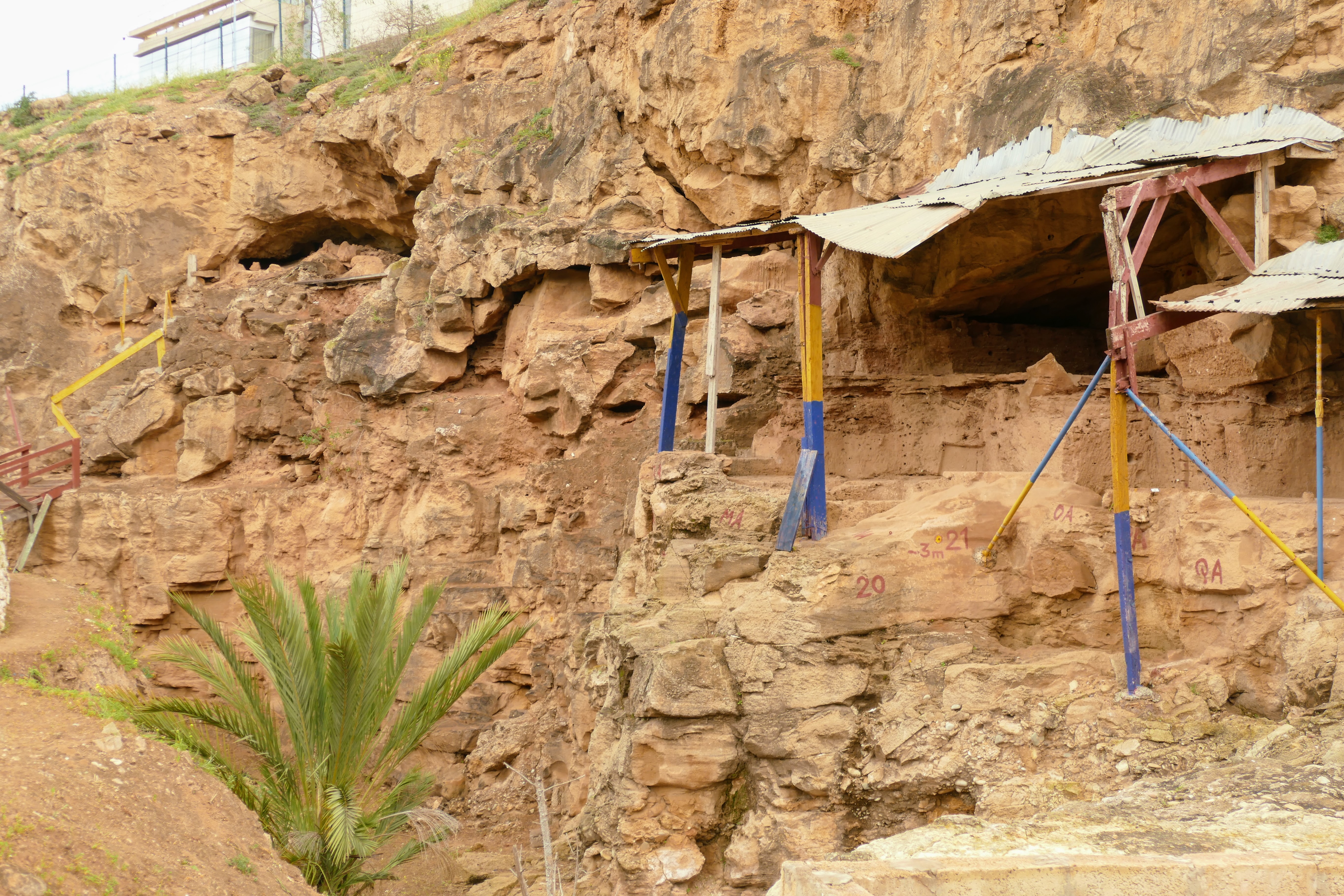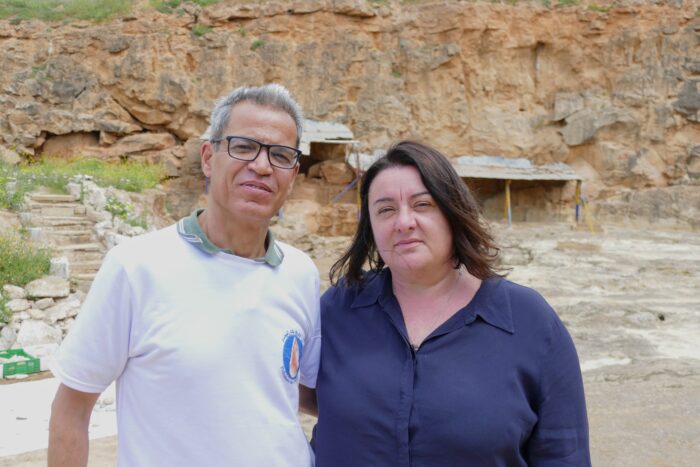Excavations at the Thomas I quarry have previously uncovered the oldest traces of human presence in Morocco, those of the Acheuleans. Recent research continues to unravel the mysteries of these cousins of Homo sapiens. Those settled on the Moroccan coast hundreds of thousands of years ago needed to survive among a varied fauna: predators of all kinds, but also elephants, rhinoceroses and giant warthogs, all of which have now disappeared.
Since April 2, archaeologists from the Moroccan-French team « Préhistoire de Casablanca » have been back on site for a mission lasting several weeks. Giving rare access, on Sunday April 13 the team from the National Institute of Archeological Sciences and Heritage (INSAP), in collaboration with the French Institute, offered a guided tour of the Thomas I quarry. Here, a laboratory has been set up to continue the analysis of the many animal and human fossils found on site.
The oldest traces of human settlement in Morocco
The quarries in south-west of Casablanca, near Morocco Mall, document the story of the first humans in North Africa.
In 1955, the first traces of human bones more than 300,000 years old were discovered at Sidi Abderrahmane. Then, in 1969, a schoolboy stumbled across a jaw fragment in the Thomas I quarry. « It was the first human fossil to be discovered, precisely in the Grotte à Hominidés, » explains Abderrahim Mohib, co-director of archaeological research. Three years later, head fragments and a dozen teeth were discovered in the nearby Oulad Hamida I quarry.
From 1994 onwards, Moroccan and French researchers from the Casablanca archaeological cooperation program have unearthed more than a dozen new human remains. These mainly include teeth (particularly resistant to time) as well as fragments of jaws and vertebrae.

The Grotte à Hominidés (Hominid Cave) in the Thomas I quarry provides clues to what were undoubtedly the very first inhabitants of Morocco. These were not Homo sapiens – who appeared around 200,000 years ago – but an older species, a variant of Homo erectus: the Acheuleans. They stood perfectly upright, carved stone with precision and hunted; skills that mark a crucial turning point in human history.
The unusual discoveries made in this cave have uncovered remains dating from between 1.25 million and 750,000 years ago. These are not only the oldest human remains found in North Africa, but also the most precisely and solidly dated.
Similarly, well-preserved traces shed light on the fauna that frequented the cave and its surroundings: species of antelope and gazelle, but also carnivores that had set up camp there. For example, jackals, hyenas or panthers.
Humans: prey or predator?
Camille Daujard, French archeozoologist with the « Prehistoric Casablanca » program, is studying the relationship between prehistoric man and other animal species. « In the Grotte à Hominidés, human remains dating back some 800,000 years have been found: these humans occupied the caves, but were also, at other times, eaten by carnivores. »
This was confirmed by the team of archaeologists who found a human femur with bite marks in the cave. For the archaeozoologist, « this femur showed that certain humans were sometimes recovered dead or had perhaps been predated. Several types of carnivore were found, but these were probably hyenas, of which fossils have also been found« .
Camille Daujard continues: « In another, slightly older cave, the Grotte des Rhinocéros, we found traces of the butchery of ancient antelopes and zebras. This indicates that these humans were scavenging meat from animals that had probably been hunted. »
These discoveries show that competition was fierce in those days: sometimes humans were hunted by carnivores; sometimes they hunted for food.
It was below this cave, at the bottom of the Thomas I quarry, that the oldest traces of human settlement in Morocco were discovered, dating back 1.3 million years. On this formerly marshy site, « we found hippopotamuses, crocodiles and numerous human tools« , explains Camille Daujard.
Abderrahim Mohib adds: « On this open-air site, called ‘Level L’, 4,000 pieces of cut stone have been found… It’s easy to imagine these humans making their tools and hunting around a swamp, near the shores of the Atlantic Ocean. »
Towards a prehistory museum
All these discoveries have reinforced the importance of prehistoric research in Morocco, which is now on the frontline of understanding humanity’s past, explains Abderrahim Mohib: « The Ministry of Communication, the Directorate of Cultural Heritage and the perseverance of the scientific team have made it possible to protect the city’s main archaeological sites. »

The formerly private Thomas I quarry, where INSAP currently conducts its research, was transferred to the Ministry of Culture by its previous owner. This research enables the refinement of data, as well as the specification of each discovery’s chronology. Researchers are also seeking to better understand prehistoric man’s nutritional behaviours, based on fossil evidence.
The Sidi Abderrahmane archaeological park project, having been abandoned on several occasions, was relaunched a month ago by the Ministry of Culture.
Rosalia Gallotti, a specialist in early human cultures on the African continent and co-director of the « Prehistoric Casablanca » program, is delighted: « This will be one of the very first museums in Africa dedicated to this period of prehistory. There’s a real interest from the local communities, which we’re delighted about. This museum will be crucial for further research here in Morocco. »
Written in French by Johan Mazars, edited in English by Theodore Griffin




